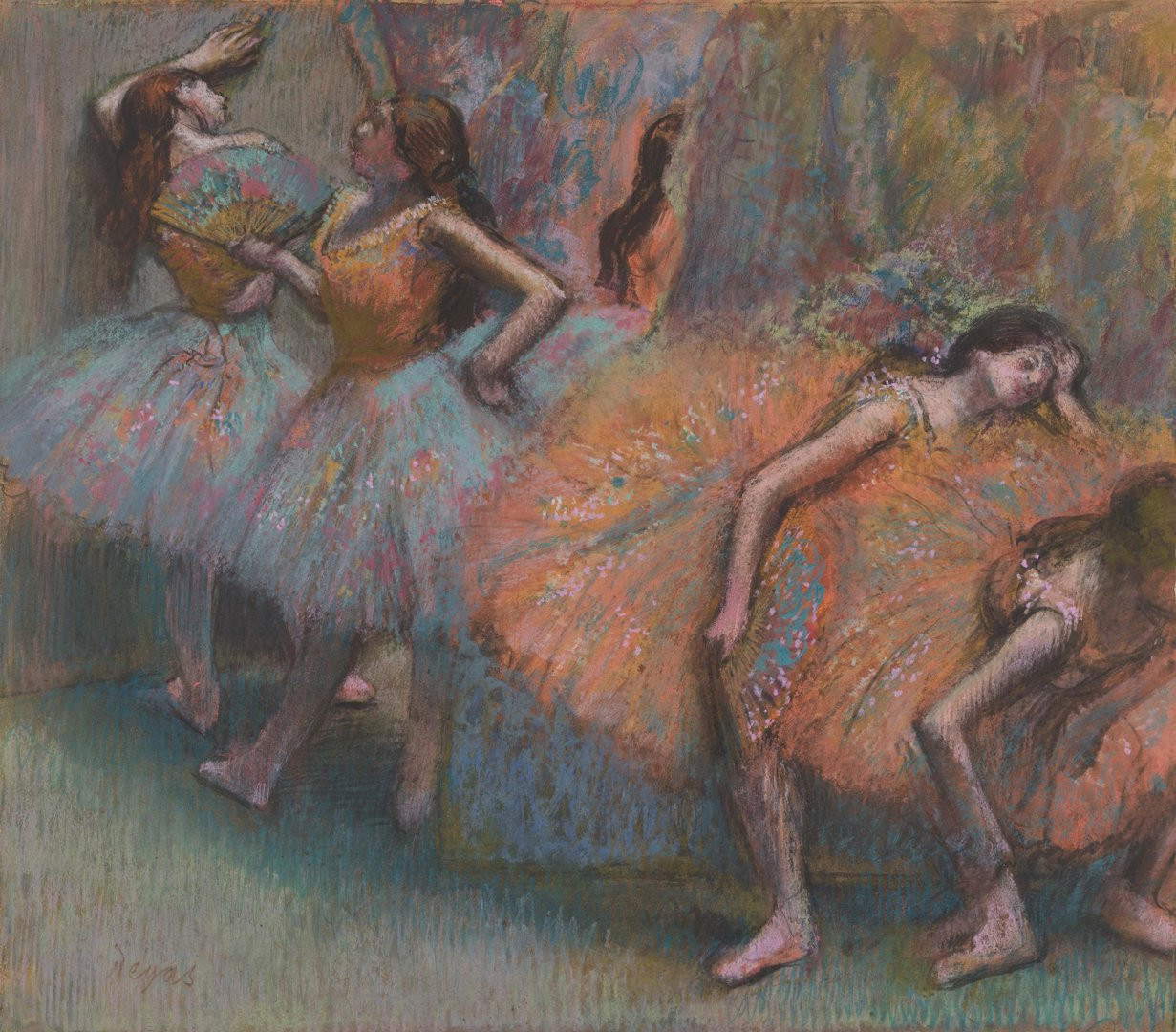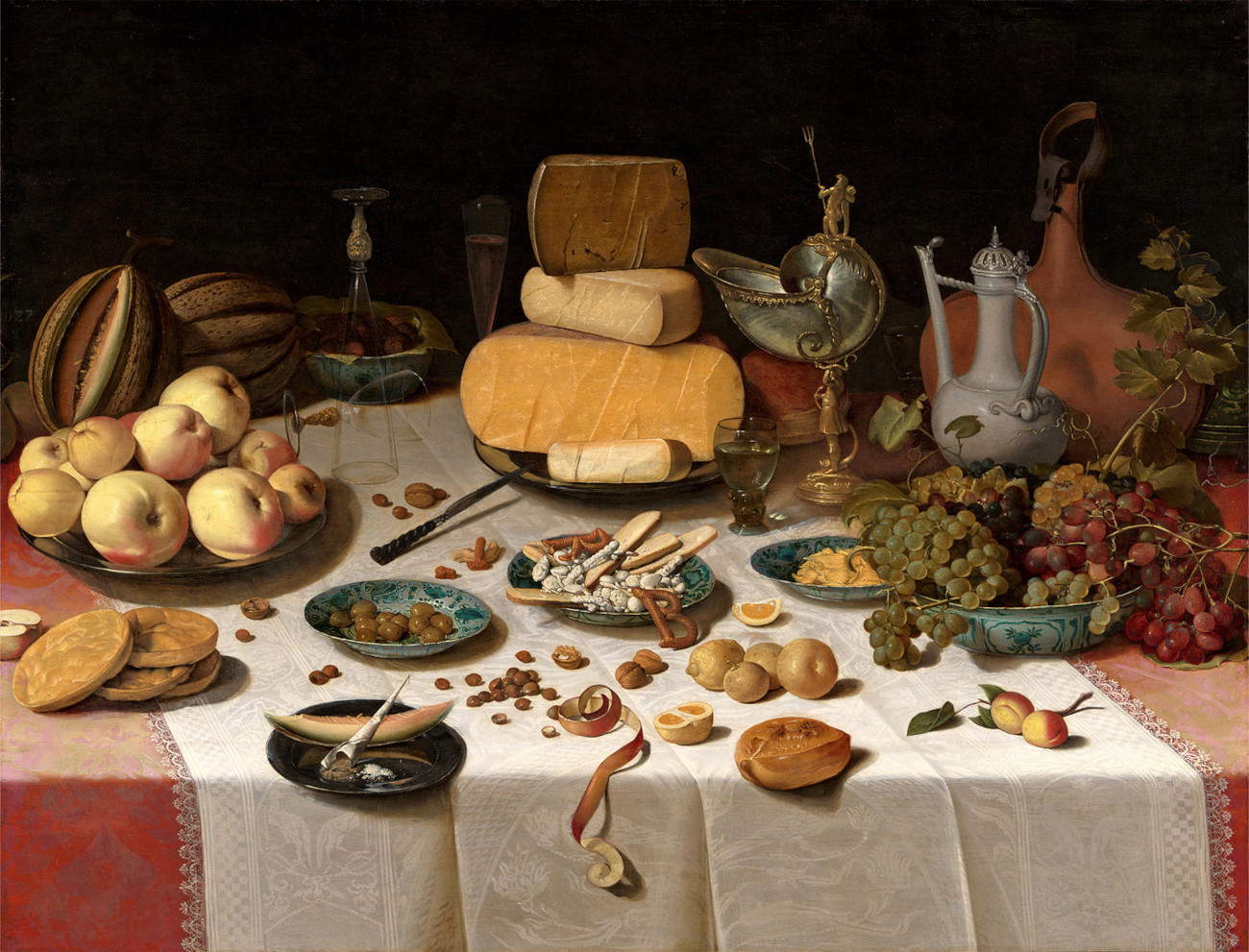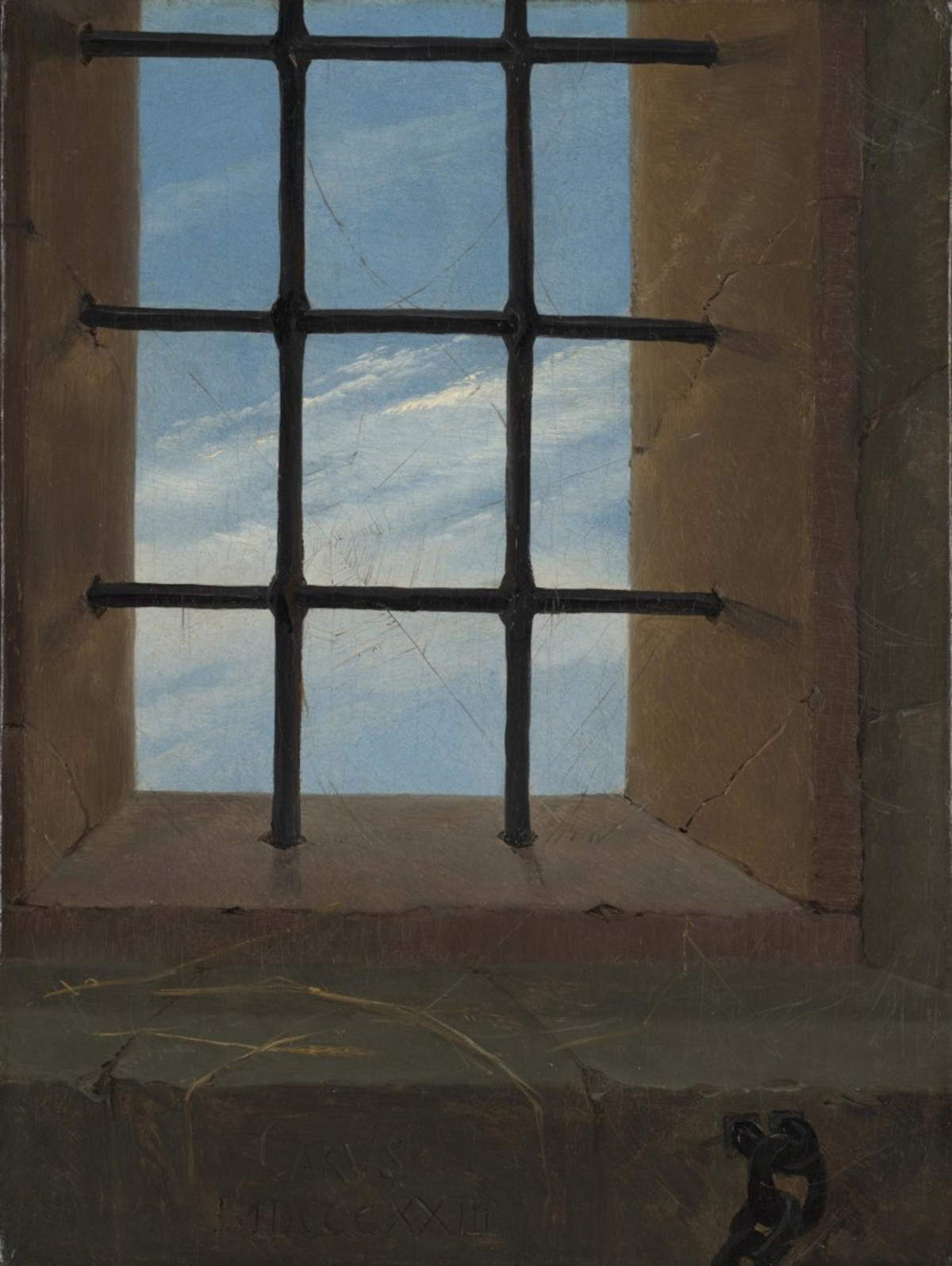Three new acquisitions for the National Gallery in London on the occasion of the museum’s bicentennial are a pastel by Edgar Degas depicting Ballerinas, Carl Gustav Carus ’ View of the Sky from a Prison Window, and Floris van Dijck’s Still Life with Banquet.
Degas’s work, which complements the National Gallery’s already rich collection of works by the Impressionist painter, shows five ballerinas dressed in vibrant tutus gathering offstage after a challenging performance. It is one of five pastels by Degas that feature this composition, none of which is identical to the other. Ballerinas were a constant inspiration in the artist’s output, and throughout his long career he depicted them in rehearsal, on stage and at rest in numerous studies, pastels and oil paintings. Dancers were a useful subject for Degas to study the female figure, draperies and lighting effects.
The work demonstrates the complex pastel technique favored by Degas in the 1880s, which involves overlapping, blending, and shading tones to create the effect of rich, pulsating color. The apparent naturalism of the scene conceals careful composition. Firm brushstrokes of pure pastel enhance the intense lighting.

Still Life with Banquet, created by Delft-born painter Floris van Dijck in 1622, is the largest work by the artist that has come down to us and, within his limited output, is considered among the most significant. Indeed, it is one of the greatest examples of seventeenth-century Dutch still lifes; a rare painting, one of only fourteen known extant, by a painter who depicts richly set tables with a variety of objects and foods rendered with accurate detail. Fruits, olives, pastries and butter flakes in various Chinese porcelain bowls, cheese and apples on plates, a knife, a Schnabelkanne, or pitcher with spout, a nautilus cup in gilded silver, wine glasses, a plate with spices, melon and various fruits, loaves and nuts scattered about, all arranged on a strip of white damask lace laid over a red tablecloth also damask.

Finally, View of the Sky from a Prison Window, an 1823 work by Carl Gustav Carus, constitutes the first painting by the German Romantic painter to enter a public collection in the United Kingdom. A friend of Johann Wolfgang Goethe, Carl Gustav Carus was a physician, naturalist, scientist, psychologist and landscape painter and studied with the great German Romantic painter Caspar David Friedrich; he is considered one of the leading exponents of German Romanticism.
This small work, which adds to the Gallery’s growing collection of 19th-century German art, was made in Dresden at the height of his friendship with Friedrich. The view looks out over a blue sky streaked with white clouds, through a barred window, with no visible element of town or country. A few strands of straw are scattered on the gray stone sill. On the right are embedded in the wall the first links of a heavy chain. The artist has even depicted a spider web just beyond the bars. The work is signed on the stone and probably evokes the marks left by prisoners on the walls of their cells. It is a painting that symbolizes Romantic-era concerns about freedom and imprisonment.

 |
| The National Gallery is enriched with three new works: Degas, a German Romantic and a Dutch |
Warning: the translation into English of the original Italian article was created using automatic tools. We undertake to review all articles, but we do not guarantee the total absence of inaccuracies in the translation due to the program. You can find the original by clicking on the ITA button. If you find any mistake,please contact us.